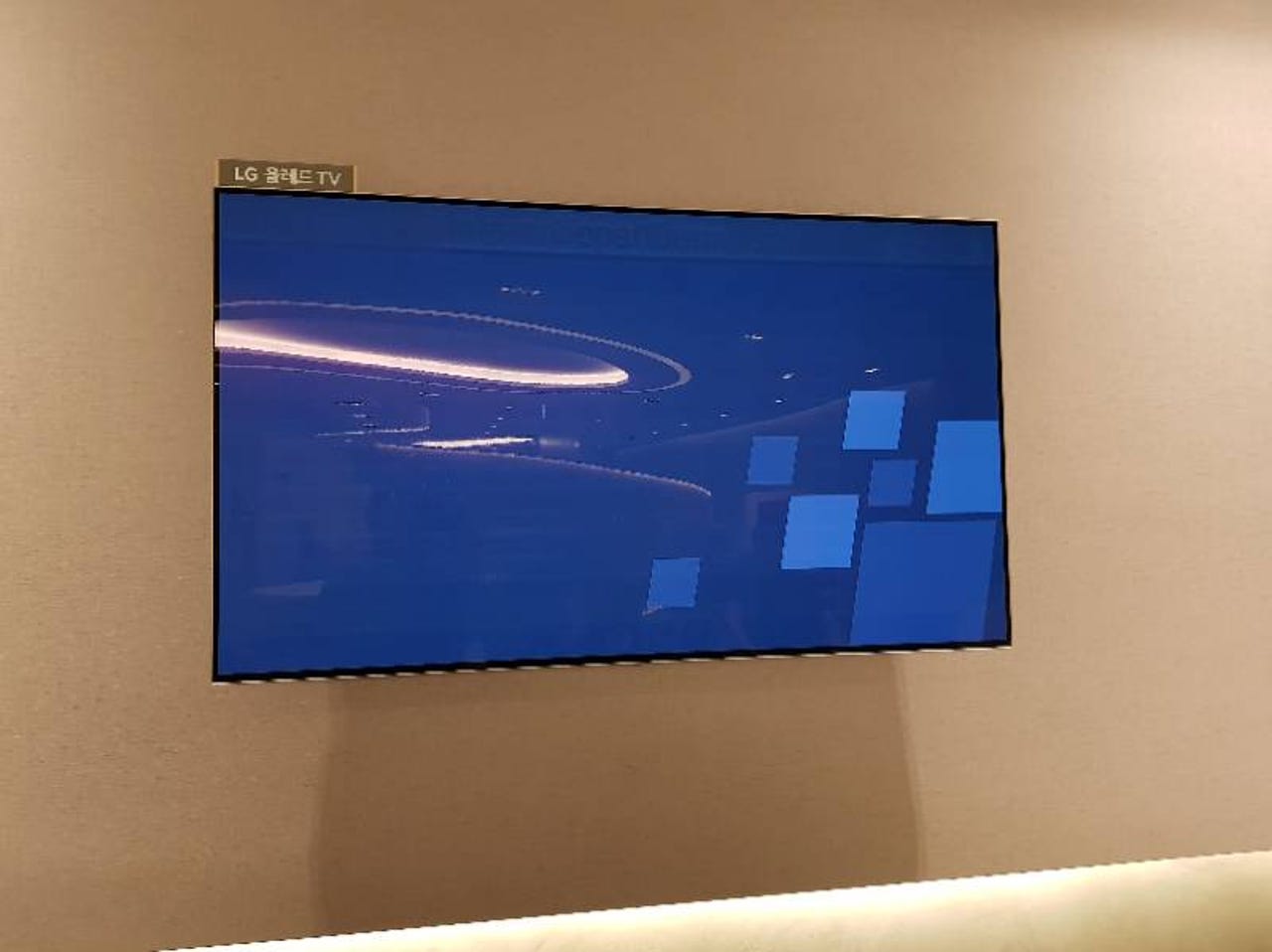LG OLED burn-in at Incheon Airport reignites controversy


The burn-in is clearly visible near top of the screen.
LG's only months-old 2018-model OLED TV installed at Incheon International Airport has shown signs of burn-in, sources told ZDNet.
The affected OLED TV installed at Korean Air Miler Club Lounge at the airport's second terminal was being used to show departure schedules. A thick white line between the heading and the graphical table was visibly burnt-in when the TV switched images. The line was static, while information inside the table kept changing and didn't leave retention.
In January, LG installed 29 OLED TVs in the airport lobby and 40 units at four lounges of the airport's second terminal, newly opened this year for marketing. The company has been caught off guard by the burn-in, sources said, as the TVs were only months old.
LG was unavailable for comment. It is unclear whether the issue pertains to the models installed at Incheon or a factory problem for this year's models.
The South Korean tech giant has consistently denied that burn-in is a problem, saying its TVs can last as long as 30,000 hours, or around 10 years with an average daily viewing of eight hours, without burn-ins.
Concerns over burn-ins on OLED TVs, which were first launched five years ago, have risen concurrently with the technology's mass deployment.
Burn-in refers to permanent image retention, usually caused by leaving a static image on the screen for a long period of time. The images are "burnt-in" and are visible, like stains, when playing other content.
The problem is especially pronounced for OLED, and PDP, that control individual pixels. Each pixel emits its own light which causes a difference in lifespan. Longer-used pixels are vulnerable to image retention, and if used too long, can lead to burn-ins.
TV reviews site RTings.com has been conducting a burn-in test on six 2017 OLED TVs since January this year. Uniformity issues were clearly visible after the four-week stage. LG engineers visited the site's lab and confirmed the issues were a result of a factory problem and that some panels were more prone than others.
A separate 20-hour-per-day test on OLED and LCD TV run since August last and planned for a year has shown permanent retention on the OLED TV.
See ZDNet's sister cite CNET for a comprehensive analysis of OLED burn-ins.
PREVIOUS AND RELATED COVERAGE
<="" p="" rel="follow">
- <="" p="" rel="follow"> <="" p="" rel="follow">
<="" p="" rel="follow">
<="" p="" rel="follow"> <="" p="" rel="follow">LG launches portable instant camera-printer hybrid
LG's Photo Pocket Snap is a hybrid of instant camera and portable printer that will allow users to print photos immediately after they take them.
LG posts record profit amid sliding mobile sales for Q1 2018
LG said the results represent the highest Q1 profit and revenue in company history, despite an operating loss of 136.1 billion won year over year for the company's mobile division.
LG to foster innovative display startups
Samsung researching quantum dot on MicroLED TVs
The South Korean tech giant is looking into ways to apply quantum dot technology to its MicroLED TV, according to its head of Visual Display.
MicroLED patents nearly double in a year in South Korea
MicroLED patents filed in the country, which were close to nil near the end of the last decade, have gone from 67 in 2016 to 120 in 2017.
Apple patents stylus to write on any surface, not just touch screens(TechRepublic)
The new device could be used for augmented reality applications, and could be simultaneously connected to multiple devices.